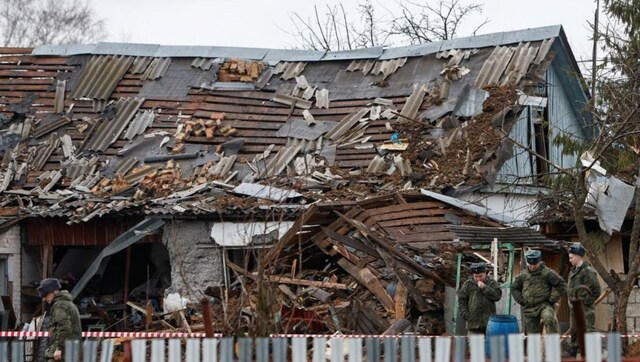EU plan for Ukraine ammunition hits legal snag over arms contracts profits
The bone of contention remains whether these arms contracts will go exclusively to EU companies (and how to legally define them), or also be open to outside manufacturers, according to a report

Ammunition are placed as Ukrainian soldiers take part in a military exercise at a military training camp in an undisclosed location in England, on 24 March, 2023. AP File
New Delhi: Two weeks after the EU announced a historic agreement to deliver 2 billion euros ($2.14 billion) worth of ammunitions to Ukraine, the bloc is still sorting out the legal specifics over who will pocket the profits.
EU ambassadors met Wednesday to discuss the issue but were unable to make significant progress on one of the key issues.
The bone of contention remains whether these arms contracts will go exclusively to EU companies (and how to legally define them), or also be open to outside manufacturers, according to a Politico report.
France is pushing for the money to stay within EU borders, reported Politico, citing several diplomats. And Greece and Cyprus back Paris in a move that some of the diplomats said is linked to their desire to avoid contracts going to Turkish manufacturers.
With the issue stalled, ambassadors on Wednesday instead focused on finalising a less-controversial part of the agreement: A deal to donate large swaths of ammunition to Kyiv.
Ambassadors completed a deal on the donation plan during the meeting, adding that the legal text is expected to be officially published next week, Politico quoted diplomats as saying.
EU’s $2.14 billion Ukraine plan
On 20 March, European Union foreign ministers had agreed to a 2 billion-euro ($2.14 billion) plan to raid their stockpiles and jointly purchase desperately needed artillery shells for Ukraine.
As part of the plan, the 27-nation bloc decided to supply 1 million rounds to Ukraine over the next 12 months.
Kyiv has complained that its forces are having to ration firepower as Russia’s yearlong invasion has turned into a grinding war of attrition.
Ukraine told the EU that it requires 350,000 shells a month to help its troops hold back Moscow’s onslaught and allow them to launch fresh counteroffensives later in the year.
Compensating EU members
A package of one billion euros was earmarked for compensating EU members who would dip into their own stockpiles, and another billion for getting new shells made by military contractors, with orders organised and fast-tracked by the EU Defence Agency.
EU foreign policy chief Josep Borrell had proposed the ammunition plan, arguing in February that it was the most important issue. “If we fail on that, the result of the war is in danger,” he said at the time.
The US, EU and NATO have all insisted they were not participants in the conflict, while also arguing that Ukraine must win and Russia “must lose.”
Moscow has repeatedly warned the West to stop “stuffing” Kiev with arms and ammunition, arguing that they are only delaying the inevitable while risking open confrontation.
Russia has already increased its own ammunition production, tripling the number of shells the US and EU plan to supply Kiev over a year-long period, President Vladimir Putin said last week.
With inputs from agencies
Read all the Latest News, Trending News, Cricket News, Bollywood News,
India News and Entertainment News here. Follow us on Facebook, Twitter and Instagram.
also read

Taiwan recalls ambassador to Honduras over FM's China visit
The announcement came as Honduran Foreign Minister Eduardo Enrique Reina was heading to China to hold talks on the establishment of diplomatic relations with Beijing, government officials said

Ukraine hits Russian-held Melitopol amid growing counteroffensive
Melitopol, with a pre-war population of around 150,000, is a railway logisitics hub for Russian forces in southern Ukraine and part of the land bridge linking Russia to the Crimea peninsula

Russians angry as Ukrainian drone shot down over homes
Russia's Defence Ministry said on Sunday it had electronically disabled a Ukrainian drone, which veered off course and crashed onto Kireyevsk, a town of about 25,000 inhabitants 220 km (140 miles) south of Moscow
